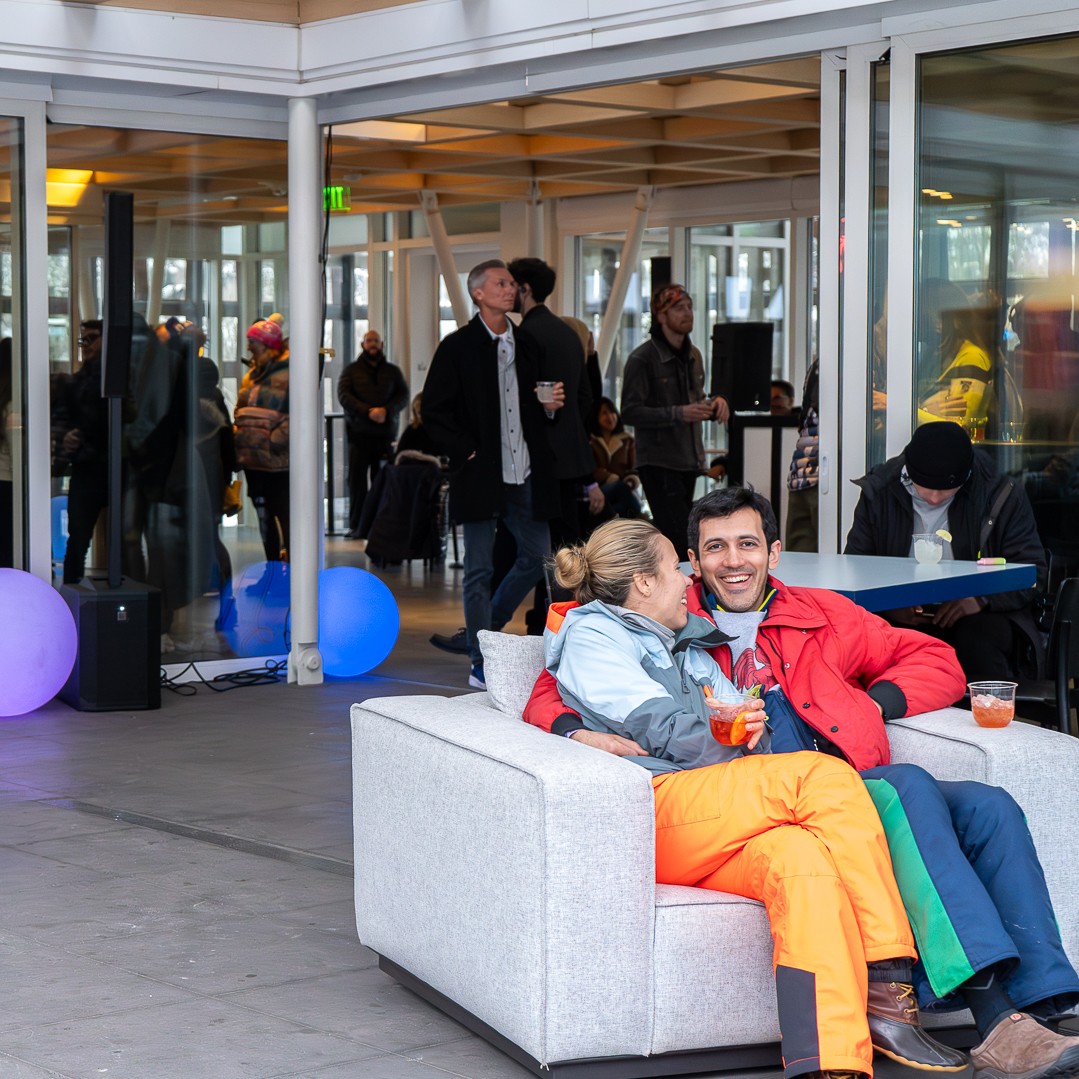Aspen Art Museum
- Join us on May 15 for engaging presentations by our esteemed 2024 Artist Fellowship recipients!
- Categories
- All events
- Talks and Lectures
- Member Events

- For more information on how you can join the AAM, please visit the Street Level Visitor Information Desk, inquire in the Shop, or call 970.925.8050.

- The Rooftop Café is committed to sharing real farm-to-fork experiences with the Roaring Fork Valley. Visit us today!

- Aspen Art Museum is an artist-founded institution dedicated to supporting artists in the development of bold ideas to shape our museum and the field of art today.
About this Work
Profoundly inspired by growing up in New York, Peter Halley is fascinated by the organization of social space, the communication networks that govern it, and the evolution these technologies have undergone during his career. Since the 1980s, when Halley and his fellow neo-conceptualists came on the scene, he has exhibited extensively around the world, producing a remarkably consistent body of work. Describing his paintings as “diagrammatic” rather than abstract, the tessellating, interconnected squares, rectangles and lines, are his “cells”, “prisons” and “conduits.”
As a student Halley read Josef Albers’s Interaction of Color (1971)—a text which would influence him throughout his career—while later on he became interested in the writings of the French post-structuralists. In a conversation with Tom McGlynn for the Brooklyn Rail in 2018, he remarks: “From Foucault, I gained the insight that any attempt to borrow from a culture outside one’s own is impossible. Your interpretation will always be filtered through your own cultural lens.” In the same conversation, he describes walking and cycling the streets of New York as a child, experiencing the scale of the buildings, the noise and the crowds as a “futuristic nightmare”, and even now he describes being in Midtown Manhattan as like being “in a tropical storm”.
In footage on his website from 1994, Halley describes his workplace as “more like an operating room than an artist’s studio”. Painted with extreme precision, the large-scale canvases present hard-edged geometric forms in bright and fluorescent colors, offset by black. The surfaces have a rough texture thanks to the application of Roll-A-Tex—every DIY enthusiast’s quick path to nubbly walls. Speaking with McGlynn, Halley remarks, “I think, at heart, my work has a parodic element. Using Roll-A-Tex, for example, was a parody of painterly texture, and the prison had a parodic relationship to the modernist square.” Based in New York, in addition to his visual practice, Halley teaches, writes and was the cofounder of Index magazine. His work is included in numerous prominent museum collections including, the Museum of Modern Art and the Solomon R. Guggenheim Museum in New York; the Carnegie Museum of Art, Pittsburgh; and the Museum of Fine Arts, Boston.
About the Artist
Peter Halley (b. 1953, New York City) is an American artist who came to prominence as a central figure of the Neo-Conceptualist movement of the 1980s. His paintings redeploy the language of geometric abstraction to explore the organization of social space in the digital era.
Since the 1980s, Halley’s lexicon has included three elements: “prisons” and “cells,” connected by “conduits,” which are used in his paintings to explore the technologically determined space and pathways that regulate daily life. Using fluorescent color and Roll-a-Tex, a commercial paint additive that provides readymade texture, Halley embraces materials that are anti-naturalistic and commercially manufactured.
In the mid 1990s Halley pioneered the use of wall-sized digital prints in his site-specific installations. He has executed installations at Museo Nivola, Orani, Sardinia (2021); Greene Naftali, New York (2019); Venice Biennale (2019); Lever House, New York (2018); Schirn Kunsthalle, Frankfurt (2016); Disjecta, Portland (2012); the Gallatin School, New York University, (2008, 2017); the Museum of Modern Art, New York (1997); and the Dallas Museum of Art (1995). In 2005, Halley was also commissioned to create a monumental painting for Terminal D at the Dallas/Fort Worth International Airport, Texas.
Halley served as professor and director of the MFA painting program at the Yale School of Art from 2002 to 2011. From 1996 to 2005, Halley published INDEX Magazine, which featured interviews with figures working in a variety of creative fields. Halley is also known for his essays on art and culture, written in the 1980s and 1990s, in which he explores themes from French critical theory and the impact of burgeoning digital technology. His Selected Essays, 1981 – 2001, was published by Edgewise Press, New York, in 2013.
How to Bid:
Bidding on this work takes place at the ArtCrush gala on Friday, August 4th, at 8pm MT. Absentee and telephone bidding available - please contact bid@aspenartmuseum.org for more information, including a condition report.
There is no Buyer’s Premium and the difference between the mid-estimate and the winning bid is a tax deductible donation to the museum.
free courtesy
Amy & John Phelan
- Aspen Art Museum
- 637 East Hyman Avenue
- Aspen, Colorado 81611
- t: 970.925.8050
- f: 970.925.8054
- info@aspenartmuseum.org
| Hours |
|
Tuesday–Sunday, 10 AM–6 PM
Closed Mondays
|
© 2024 Aspen Art Museum
General operating support is provided by Colorado Creative Industries. CCI and its activities are made possible through an annual appropriation from the Colorado General Assembly and federal funds from the National Endowment for the Arts.



General operating support is provided by Colorado Creative Industries. CCI and its activities are made possible through an annual appropriation from the Colorado General Assembly and federal funds from the National Endowment for the Arts.


















